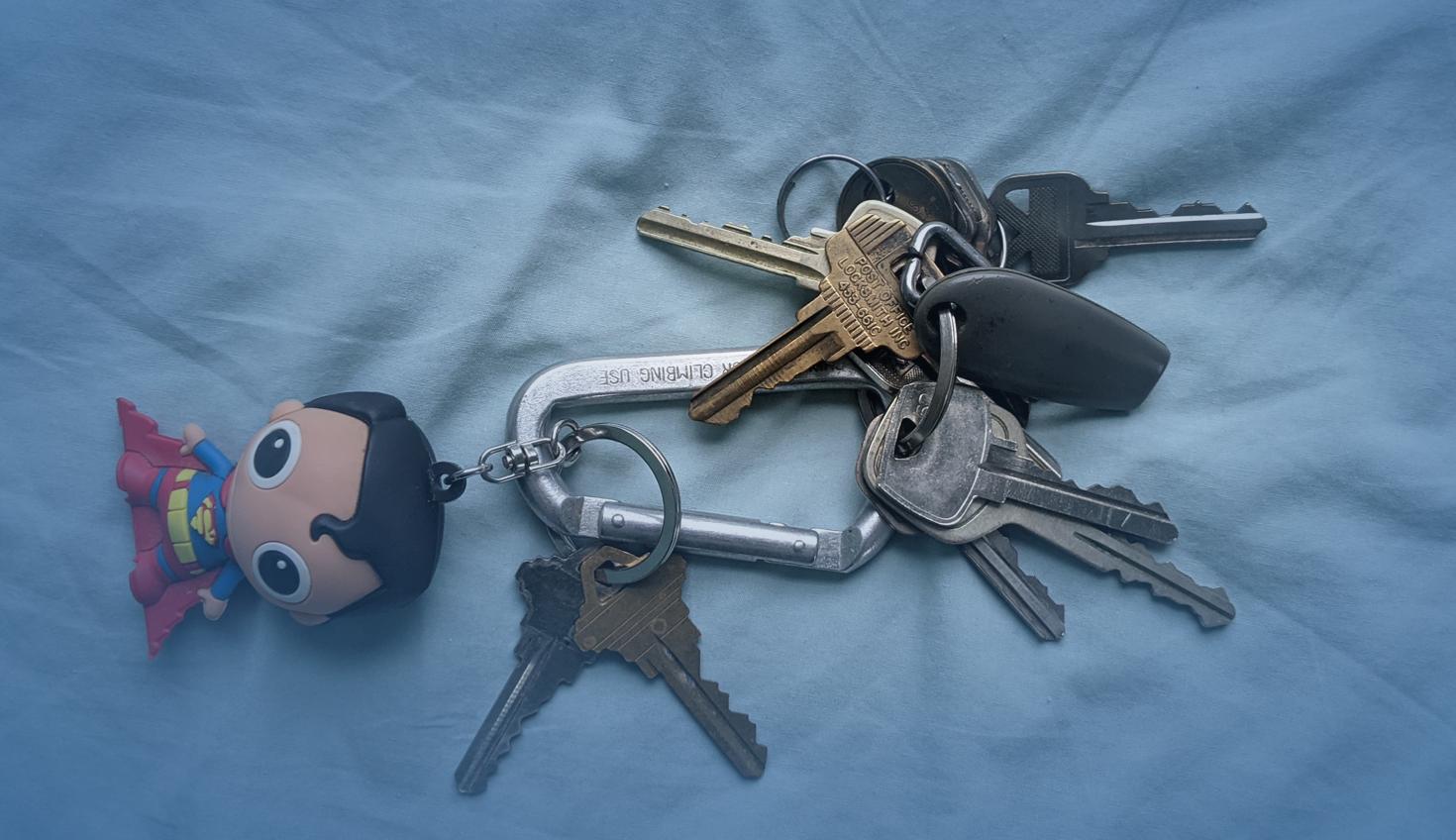
5:35
As any Bible reader or college philosophy major will confirm, humans have free will – and that can be a huge problem in terms of productivity in our work and personal lives.
Here’s a quick-and-dirty chart of how much time we waste each year on various activities:
Time You Will Never Get Back
- 8.1 days/year - Posting and Scrolling on Instagram (Becoming Instafamous)
- 5.5 days/year - Couples Deciding What to Eat (NY Post)
- 4 days/year - Women Deciding What to Wear (Daily Mail)
- 3 days/year - Men Deciding What to Wear (Daily Mail)
- 2.5 days/year - Searching for Misplaced Items (Pixie Technology)
- 2.25 days/year - Being Stuck in Commuter Traffic (CNN)
There are inherent flaws in all data, which is a topic for another blog, but it’s worth noting that both the clothing decision study and the commuting study referenced above were done prior to the COVID-19 pandemic. Presumably, with most desk workers still being remote right now, the decision for which shoes to wear with a specific outfit is currently moot, and commuting time in most places still hasn’t returned to its full agonizing peak.
Also, human behavior varies widely from individual to individual. In your spare time, or perhaps during work Zoom meetings with your camera off, you may prefer recording dance videos for TikTok, while your colleague might like to post their takeout meals on Instagram.
The real questions when considering statistics like this are “Which of these time-wasting activities are behaviors I can change?” and “Which ones are beyond my control?”
Reducing Wasted Time in Product Development
Companies live or die based on their intellectual property, and that IP is created by designers and engineers. Enormous sums are invested to generate the next big idea. Every hour the engineering team is not working on product designs wastes precious time and extends the wait for new improvements and innovations.
Wasted time also creates opportunities for competitors to catch up to your company or beat you to the market – provided that they are not wasting time, too.
So which activities are “stealing” the most design time? In The State of Product Development and Hardware Design 2021 report, an independent industry survey commissioned by Onshape, we asked nearly 800 manufacturing executives, project managers and engineers that very question.
Here’s what is getting in the way of productivity:
Source: The State of Product Development and Hardware Design 2021
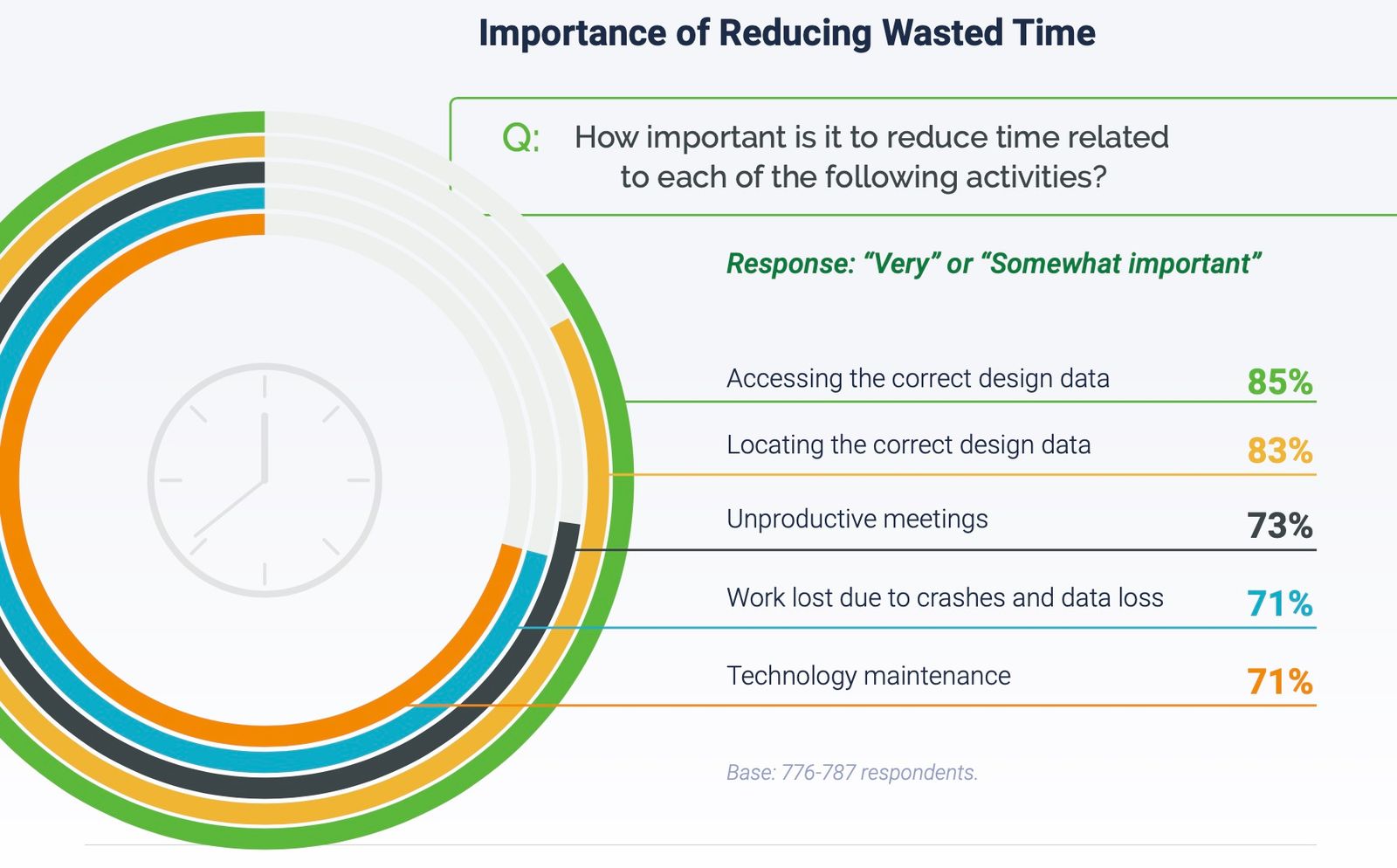
These survey results are absolutely stunning. More than 4 out of 5 product development professionals report having trouble finding the correct product design or accessing it.
Working on the wrong version of a design can lead to costly manufacturing errors, frustrating rework, wasted materials and possible liability issues. But it’s also stolen time that could have been devoted to the next project. Not being able to locate the design in the first place is equally frustrating and unproductive.
The fact that the data management problems beat out unproductive meetings – everyone’s favorite punching bag – is a notable feat. The engineering field, which places a high value on accuracy and precision, is still struggling with version control and making it easy for multiple contributors in a project to get to the right data.
Rounding out the list of top time-wasters are CAD crashes and data loss (nothing is more aggravating than watching your work instantly vanish), and software and hardware maintenance.
Although long meetings will likely never go away, they could be reduced if employees could always get to the data they need and could communicate about it effectively peer to peer. This transition has already occurred in the software development industry and in the customer relationship management (CRM) space.
This list of time-wasters should motivate design and manufacturing companies to ask themselves, “How can we give our product design team more time for design?”
As with the time-wasters in our personal lives (lost keys, traffic, mindless internet surfing), the answer lies in which factors you can control and which ones you can’t.
When working in Onshape, engineering teams never waste time looking for the latest version of a design because there is only one place to look – their Onshape Document, which they can access the moment they sign in. Because Onshape is a SaaS platform, there are no downloads, installs, license codes or upgrades to worry about – engineers can spend more time being engineers and less time on IT administrative tasks. Simultaneous editing means that teams can also say goodbye to productivity-killing serial workflows.
Get Your Copy of “The State of Product Development and Hardware Design 2021”
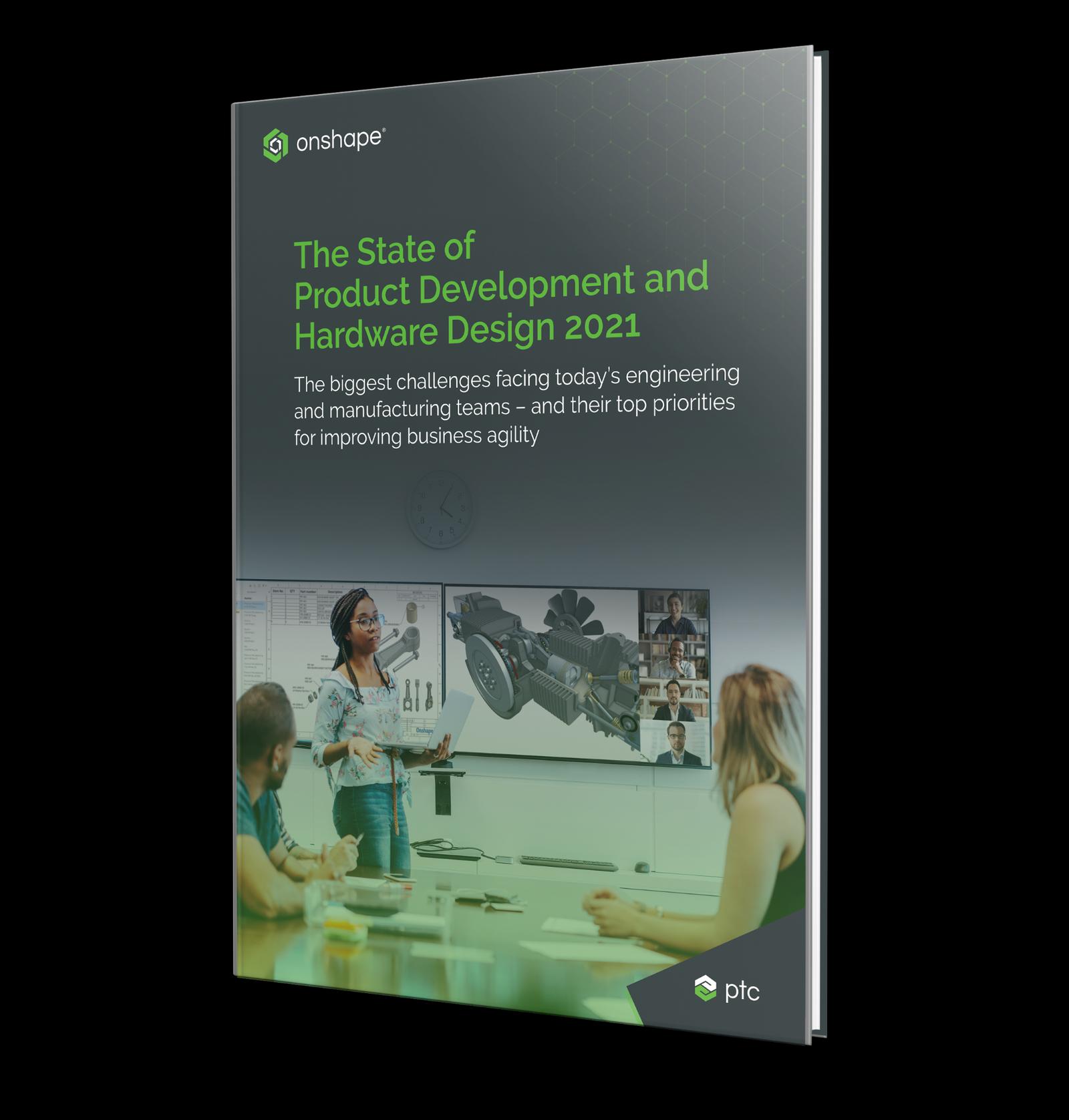
Interested in learning more about potential areas of improvement for your product development team? In addition to exploring how to reduce wasted engineering time, this 2021 industry survey also offers insights on the following topics:
- The Capabilities Gap –Companies self-rated their actual performance vs. their desired goals across specific areas of the design and manufacturing process. The two biggest priorities for improvement this year are “minimizing time spent on non-design related activities” and increasing “early communication, visibility and clarity in the design process.”
- The Perception Gap – Executives consistently have a rosier view of their design capabilities than project managers or individual contributors. These differing perspectives about team strengths and weaknesses could possibly lead to unrealistic timetables for delivering on deadlines – or be a sign of poor internal communication.
- Data Management Challenges – Half of on-premise PDM/PLM users say that their software gets in the way of team collaboration and slows down the overall product design process. While 45% say PDM has only replaced one problem (version control) with another problem (delays).
- Workplace Flexibility – Companies that view themselves as “highly productive” are better at supporting “work from anywhere.” While 74% of high-productivity companies say they are good or excellent at giving employees flexibility for when and where they work, only 41% of average or low-productivity companies give themselves similar marks.
- Pandemic Impact – As a result of the product development lessons learned from the COVID-19 pandemic, 63% of engineering professionals say remote collaboration tools are now more of a company priority. Another 58% of respondents say they now have a greater need for seamless access to design documents from any location.
- The Generation Gap – Across multiple categories, Millennial and Gen Z engineers give their employers lower scores for offering workplace flexibility and for enabling real-time access to information than their later-career colleagues. This perception gap is important for executives to consider as they think about their future recruiting efforts.
Download your free copy of The State of Product Development and Hardware Design 2021 today and discover the best opportunities for improving business agility.
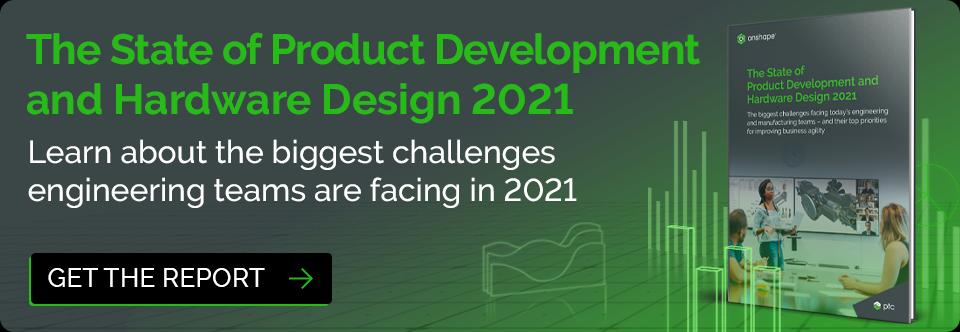
Latest Content
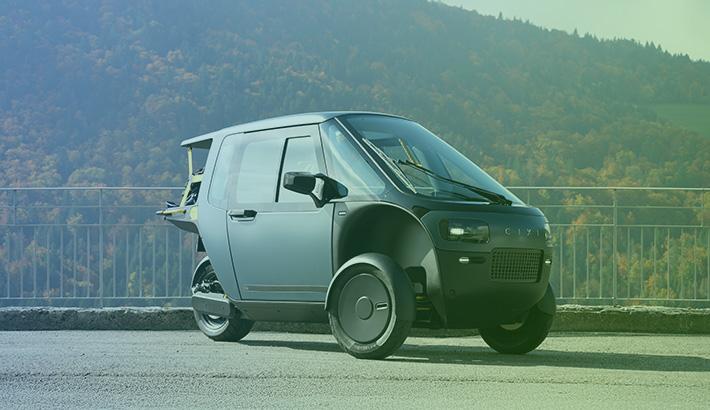
- Case Study
- Automotive & Transportation
Zero Crashes, Limitless Collaboration, One Connected Workflow With Cloud-Native Onshape
12.04.2025 learn more
- Blog
- Becoming an Expert
- Assemblies
- Simulation
Mastering Kinematics: A Deeper Dive into Onshape Assemblies, Mates, and Simulation
12.11.2025 learn more
- Blog
- Evaluating Onshape
- Learning Center
AI in CAD: How Onshape Makes Intelligence Part of Your Daily Workflow
12.10.2025 learn more
- Blog
- Evaluating Onshape
- Assemblies
- Drawings
- Features
- Parts
- Sketches
- Branching & Merging
- Release Management
- Documents
- Collaboration
Onshape Explained: 17 Features That Define Cloud-Native CAD
12.05.2025 learn more



